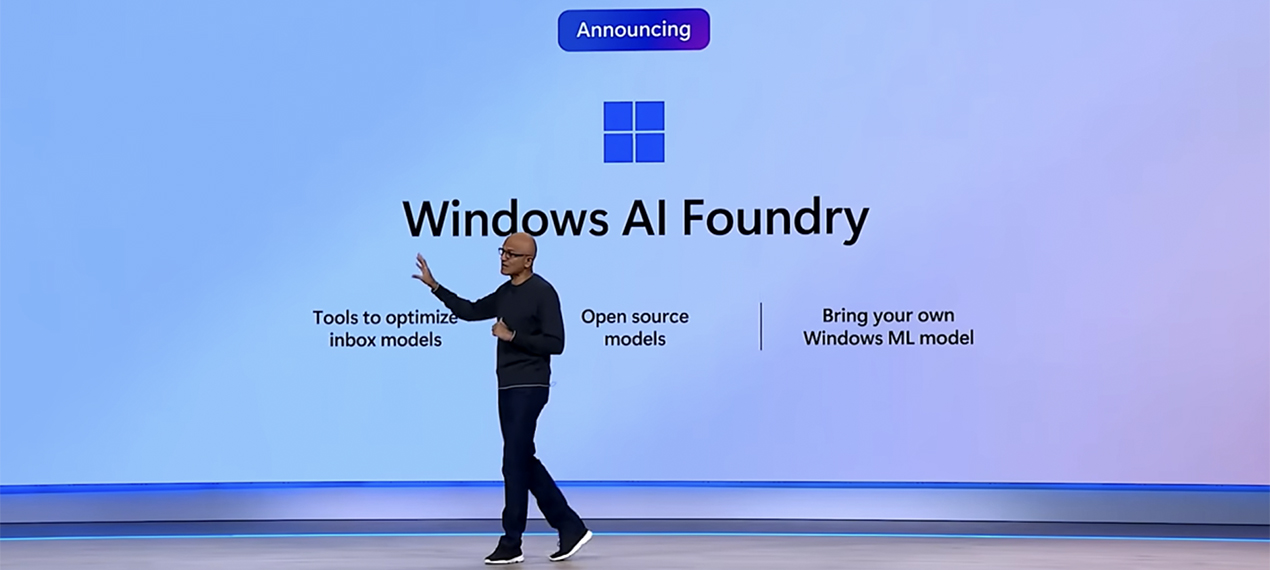
On Tuesday, John Damalas, Chief Technology Officer, and Amit Sethi, Principal AI & ML Research Scientist at JM Family Enterprises, Inc., joined Shawn Henry and Salman Quazi of Microsoft for the “Building the digital workforce: Multi-agent apps with Azure AI Foundry" session at the 2025 Microsoft Build conference in Seattle. During the Q&A, Damalas and Sethi discussed how they used Azure AI Foundry Agent Services to create an automated AI solution to enhance internal business processes. They walked the audience through the development of the initial concept and how they planned, tested and executed the project with their internal teams. The internal pilot project was so successful they ultimately decided to launch a commercial product based on the pilot.
The session moderator asked them to describe specific use cases for Microsoft Azure's AI Foundry and multi-agent capabilities that may have been the impetus for their current solution. In his response, Damalas shared how JM Family was undergoing several large-scale technology transformations. During the transitions, one of the biggest challenges the engineers faced was a lack of consistency and quality of the user stories that were being created for projects. Upon review, they found that user stories were inconsistent in the level of detail and the collective understanding around the definition of “done” in terms of acceptance criteria. When combined with unclear methods of how users would conduct testing, the challenges led to defects downstream and redundant meetings to gain clarity on what should have been outlined initially. The result was an ideal use case for an agentic AI solution that Sethi took the lead in addressing. Then Damalas assembled a software product team to start developing a tool that could assist product owners, business analysts (BA) and quality analysts (QA) in providing engineers with high quality inputs so they could do what they do best…build great software.
When asked about the implementation of multi-agent workflows and how it may have impacted their business processes, Damalas shared the immediate positive impact that resulted from this new tool. The BAs and QAs reported they had a reduction in the time it took them to build things user stories and test cases by 30, if not, 40%. And the quality of the user stories and testing artifacts increased. Best of all, with better inputs, the engineers have been able to spend less time in meetings seeking further clarity of requirements and were able to invest more time into building.
Sethi’s response outlined how the multi-agent approach was vastly different from what they'd been doing. He described it as having a team where each AI agent has a specific job — one focuses on requirements, another turns those into user stories, and a third one writes test cases. They pass work to each other, they also recall what has already been done, and can then follow a clear process — just like a real project team. He went on to note, "That’s what helped us move faster, reduce rework, and build with more confidence."
Sethi was asked to share the key lessons they learned and any best practices they would recommend to others looking to implement multi-agent systems and he shared the following insights:
Sethi also mentioned the advantages of leveraging the Azure AI Agent Service's built-in workflow orchestration instead of building your own. He concluded by noting that its support for prompt chaining, skill invocation, and agent state transitions was critical to getting the commercial product to market in a quick and timely manner.
Also highlighted in the session were a number of exciting announcements regarding Microsoft’s AI Foundry. Overall, the team from JM Family Enterprises experienced a lot of positive feedback from their session. There was also tangible excitement around the news of the new product launch - BAQA Genie. The Microsoft Build conference was a resounding success and the team is looking forward to what's next for Mosswall Technologies.